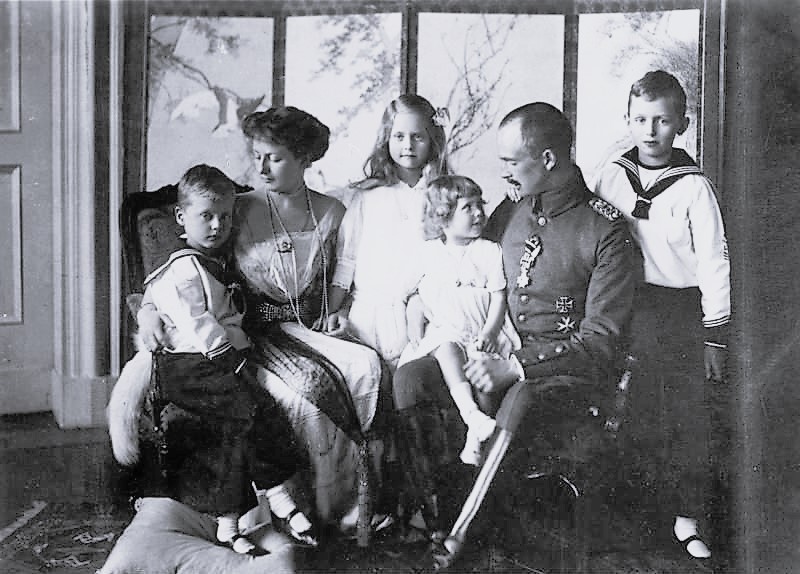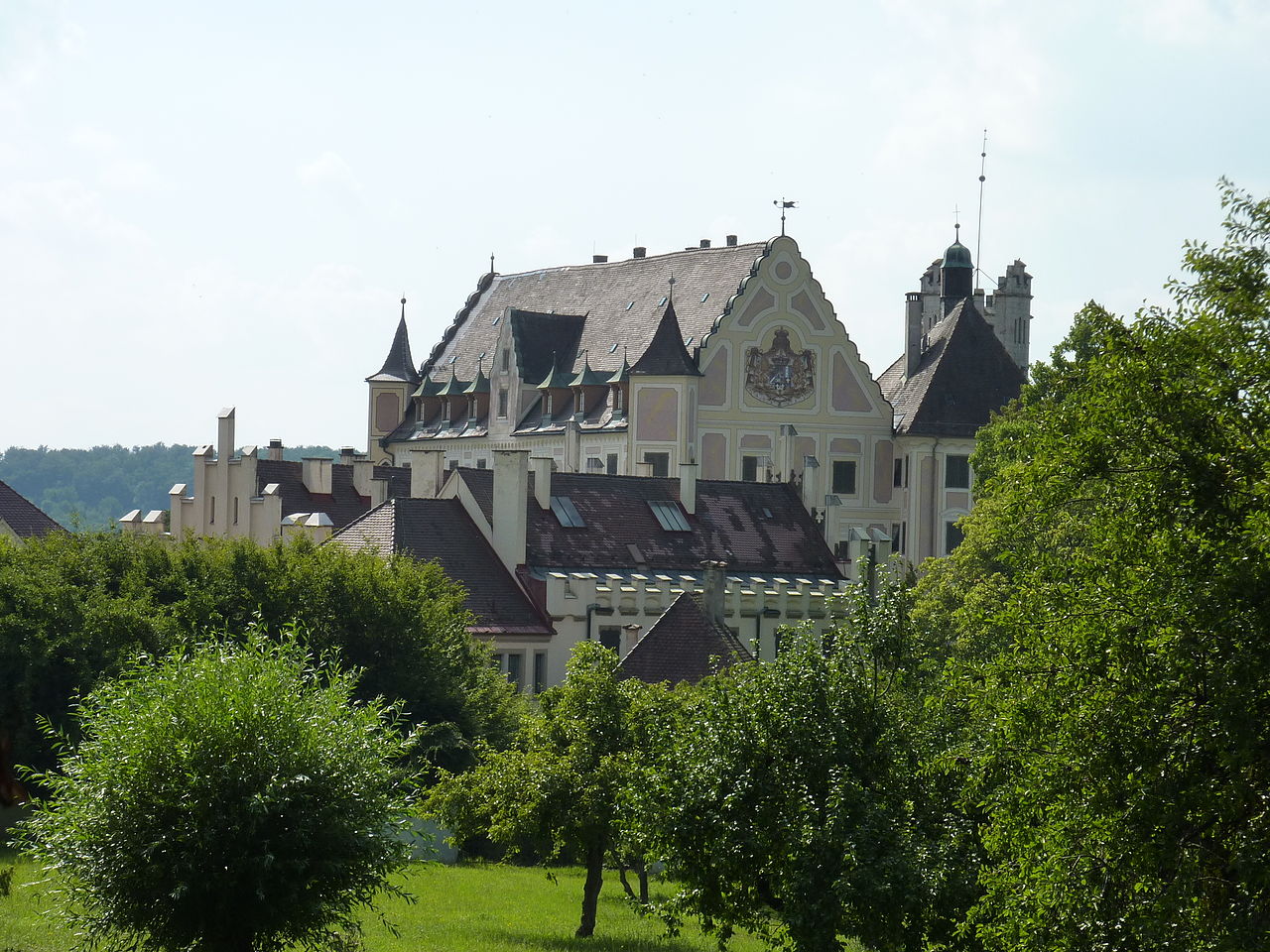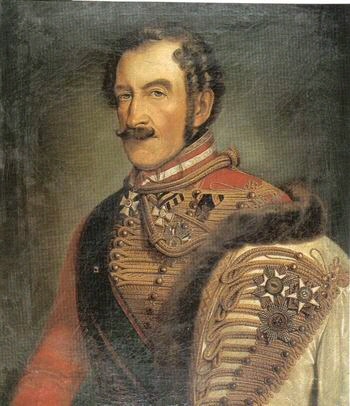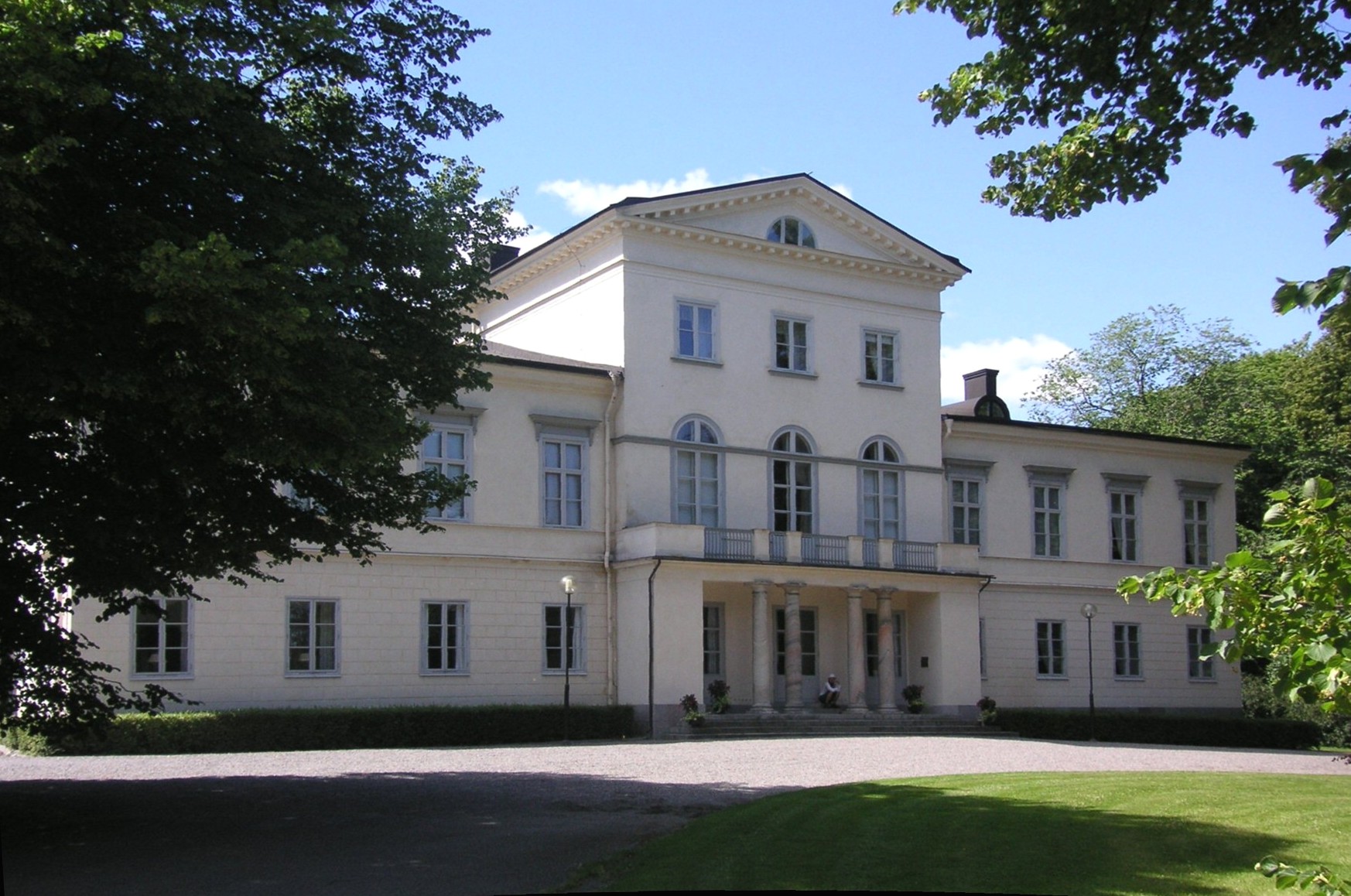by Susan Flantzer
© Unofficial Royalty 2017
Queen Victoria and Prince Albert of Saxe-Coburg and Gotha were married at the Chapel Royal at St. James’ Palace in London, England on February 10, 1840.
Queen Victoria’s Family

Queen Victoria with her mother; Credit – Wikipedia
On November 6, 1817, a great tragedy struck the British Royal Family. Twenty-one-year-old Princess Charlotte of Wales, the only child of George, Prince of Wales, the future King George IV, died after delivering a stillborn son. At the time of her death, Charlotte, who was second in line to the throne, was the only legitimate grandchild of King George III, despite the fact that thirteen of his fifteen children were still alive. Her death left no legitimate heir in the second generation and prompted the aging sons of George III to begin a frantic search for brides to provide for the succession.
George III’s eldest son (Charlotte’s father) and his second son Frederick, Duke of York, were in loveless marriages, and their wives, both in their late forties, were not expected to produce heirs. William, Duke of Clarence, age 53, married 26-year-old Adelaide of Saxe-Meiningen. 50-year-old Edward, Duke of Kent, married 32-year-old widow Victoria of Saxe-Coburg-Saafeld. Victoria was the sister of Leopold of Saxe-Coburg-Saalfeld, Princess Charlotte’s widower, and the future Leopold I, King of the Belgians. Twenty-one-year-old Augusta of Hesse-Kassel married 44-year-old Adolphus, Duke of Cambridge. It was then the scramble to produce an heir began.
Within a short time, the three new duchesses, along with Frederica, wife of Ernest, Duke of Cumberland, became pregnant. Augusta, Duchess of Cambridge gave birth to a son on March 26, 1819, and Adelaide, Duchess of Clarence had a daughter the following day. Victoria, Duchess of Kent produced a daughter on May 24, 1819, and three days later Frederica, Duchess of Cumberland had a boy. Adelaide’s daughter would have been the heir but she died in infancy. The child of the next royal duke in seniority stood to inherit the throne. This was Alexandrina Victoria, daughter of Edward, Duke of Kent and Victoria. The baby was fifth in line to the throne after her uncles George, Frederick, and William, and her father Edward.
The baby’s father, Edward, Duke of Kent died on January 23, 1820, eight months after her birth. Six days later, King George III’s death brought his eldest son to the throne as King George IV. Frederick, Duke of York, died in 1827, bringing the young princess a step closer to the throne. George IV died in 1830 and his brother William IV succeeded him. During William IV’s reign, little Drina, as she was called, was the heiress presumptive. There was always the possibility that King William IV and Queen Adelaide would still produce an heir, but it was not to be. William died on June 20, 1837, and left the throne to his 18-year-old niece, who is known to history as Queen Victoria.
Sources:
“Brewer’s British Royalty” by David Williamson
“Her Little Majesty” by Carolly Erickson
“Royal Weddings” by Dulcie M. Ashdown
Prince Albert’s Family

Prince Albert of Saxe-Coburg and Gotha; Credit – Wikipedia
Prince Franz Albrecht August Karl Emanuel of Saxe-Coburg-Saalfeld, better known by his anglicized name Albert, was born at Rosenau Castle near Coburg, in the Duchy of Saxe-Coburg-Saalfeld, now in the German state of Bavaria, on August 26, 1819. Albert was the second son of the reigning Ernst I, Duke of Saxe-Coburg-Saalfeld and Princess Louise of Saxe-Gotha-Altenburg. In 1825, the House of Saxe-Gotha-Altenburg became extinct and the Saxon duchies held by the Ernestine line of the Wettin dynasty were rearranged. Albert’s father then became the Duke of Saxe-Coburg and Gotha and Albert became a Prince of Saxe-Coburg and Gotha.
Albert’s parents had marital problems shortly after his birth. Ernst was a notorious womanizer and Louise also sought affection elsewhere. The couple separated in 1824 and divorced in 1826. After Louise’s early death from cancer in 1831, Ernest married his niece, Marie of Württemberg. Albert grew up at Rosenau Castle with Ernst, his older brother. The two brothers were complete opposites. Ernst grew up to be a womanizer like his father. Albert was serious-minded with a great love for the arts and sciences.
The Coburg family had strong ties to the British Royal Family. Albert and Ernst’s uncle Leopold had married Princess Charlotte of Wales, who died tragically in childbirth. Victoria of Saxe-Coburg-Saalfeld, their aunt, married George III’s son, Edward, Duke of Kent, and was the mother of Princess Victoria. Augusta Reuss of Erbesdorf, the Dowager Duchess of Saxe-Coburg-Saalfeld, grandmother of Victoria and Albert, suggested the possibility of marriage between them in a letter to her daughter Victoria, Duchess of Kent, in 1821, when the children were but two years old. Later, the idea was taken up by their uncle Leopold, who became the first King of the Belgians in 1831.
First cousins Victoria and Albert met for the first time in 1836 when Albert and Ernst visited England. Seventeen-year-old Victoria seemed instantly infatuated with Albert. She wrote to her uncle Leopold, “How delighted I am with him, and how much I like him in every way. He possesses every quality that could be desired to make me perfectly happy.”
In October 1839, Albert and Ernst again visited England, staying at Windsor Castle with Victoria, who was now Queen. On October 15, 1839, the 20-year-old monarch summoned her cousin Albert and proposed to him. Albert accepted, but wrote to his stepmother, “My future position will have its dark sides, and the sky will not always be blue and unclouded.”
Sources:
“Brewer’s British Royalty” by David Williamson
“Her Little Majesty” by Carolly Erickson
“Uncrowned King” by Stanley Weintraub
“Royal Weddings” by Dulcie M. Ashdown
The Wedding

The wedding of Queen Victoria and Prince Albert; Credit – Wikipedia
Queen Victoria proposed to her cousin Albert on October 15, 1839. He accepted, and the couple was married in the Chapel Royal at St. James’ Palace on February 10, 1840, at 1 pm. Traditionally, royal weddings took place at night, but this wedding was held during the day so the Queen’s subjects could see the couple as they traveled down The Mall from Buckingham Palace the short distance to St. James’ Palace.
WEDDING GUESTS
The Bride’s Family
- The Dowager Duchess of Kent (Victoria of Saxe-Coburg-Saalfeld), the bride’s mother
- Prince Carl, 3rd Prince of Leiningen and the Princess of Leiningen, the bride’s half-brother and his wife
- Ernst Leopold, Hereditary Prince of Leiningen, the bride’s half-nephew
- The Princess of Hohenlohe-Langenburg (Princess Feodora of Leiningen) and Ernst I, Prince of Hohenlohe-Langenburg, the bride’s half-sister and her husband
- Carl Ludwig, Hereditary Prince of Hohenlohe-Langenburg, the bride’s half-nephew
- Queen Adelaide, widow of the bride’s paternal uncle King William IV
- Princess Augusta Sophia, the bride’s paternal aunt
- King Ernst August and Queen Frederica of Hanover, the bride’s paternal uncle and aunt
- George, Crown Prince of Hanover, the bride’s first cousin
- Prince Augustus Frederick, Duke of Sussex and Cecilia Underwood, 1st Duchess of Inverness, the bride’s paternal uncle and aunt
- Prince Adolphus, Duke of Cambridge and Duchess of Cambridge (Princess Augusta of Hesse-Kassel), the bride’s paternal uncle and aunt
- Prince George of Cambridge, the bride’s first cousin
- Princess Augusta of Cambridge, the bride’s first cousin
- Princess Mary Adelaide of Cambridge, the bride’s first cousin
- Princess Mary, Duchess of Gloucester and Edinburgh, the bride’s paternal aunt
- Princess Sophia, the bride’s paternal aunt
The Groom’s Family
(Note: Queen Victoria and Prince Albert were first cousins. Victoria’s mother and Albert’s father were siblings and so they share Saxe-Coburg-Gotha first cousins, aunts, and uncles)
- Ernst I, Duke of Saxe-Coburg and Gotha and his second wife Marie of Württemberg, Duchess of Saxe-Coburg and Gotha, the groom’s father and stepmother, and the bride’s maternal uncle and aunt
- Ernst, Hereditary Prince of Saxe-Coburg and Gotha, the groom’s brother, and the bride’s first cousin
- Grand Duchess Anna Feodorovna of Russia (Princess Juliane of Saxe-Coburg-Saalfeld), the groom’s paternal aunt, and the bride’s maternal aunt
- Prince Ferdinand and Princess Maria Antonia of Saxe-Coburg and Gotha-Koháry, the groom’s paternal uncle and aunt, and the bride’s maternal uncle and aunt
- King Consort Ferdinand (Prince Ferdinand of Saxe-Coburg and Gotha-Koháry) and Queen Maria II of Portugal, the groom and bride’s first cousin and his wife
- Prince August and Princess Clémentine of Saxe-Coburg and Gotha-Koháry (Princess Clémentine of Orléans), the groom and bride’s first cousin and his wife
- Princess Victoria of Saxe-Coburg and Gotha-Koháry, the groom and bride’s first cousin
- Prince Leopold of Saxe-Coburg and Gotha-Koháry, the groom and bride’s first cousin
- King Leopold I (Prince Leopold of Saxe-Coburg-Saalfeld) and Queen Louise-Marie of the Belgians (Princess Louise-Marie of Orléans), the groom’s paternal uncle and aunt, and the bride’s maternal uncle and aunt
- Prince Leopold, Duke of Brabant, the groom and bride’s first cousin
- Prince Philippe of Belgium, the groom and bride’s cousin
- The Dowager Duchess of Saxe-Gotha-Altenburg (Princess Karoline Amalie of Hesse-Kassel), the groom’s maternal step-grandmother
Wedding Attire

Victoria’s Wedding Dress; Credit – Wikipedia

Bridesmaid’s Dress; Credit – Royal Collection Trust
Albert wore the uniform of a British field marshal, over which hung the collar of the Order of the Garter, an honor that had recently been bestowed on him by Victoria. Victoria’s wedding dress was of rich white satin, trimmed with orange flower blossoms. On her head, she wore a wreath of the same flowers, over which was a veil of Honiton lace. She wore her Turkish diamond necklace and earrings and Albert’s wedding present of a sapphire brooch.
While Queen Victoria may have popularized the white wedding dress, she was not the first royal bride to wear one. Documentation from the 1406 wedding of Philippa of England, daughter of King Henry IV of England, and Eric of Pomerania, King of Denmark, Sweden, and Norway indicates that Philippa wore a tunic and cloak in white silk bordered with gray squirrel and ermine, making her the first documented princess to wear a white wedding dress. In 1558, when Mary, Queen of Scots married the first of her three husbands, the future (and short-reigned) François II, King of France, she also wore white defying the tradition that white was the color of mourning for Queens of France.
Bridesmaids
The twelve bridesmaids, all daughters of peers of the realm, were simply dressed in tulle and white roses. Each bridesmaid received a gold brooch in the shape of an eagle covered in turquoise, rubies, and pearls with a diamond beak, designed by Victoria herself.
- Lady Mary Howard, daughter of Henry Howard, 13th Duke of Norfolk
- Lady Caroline Gordon-Lennox, daughter of Charles Gordon-Lennox, 5th Duke of Richmond
- Lady Adelaide Paget, daughter of Henry Paget, 1st Marquess of Anglesey
- Lady Eleanora Paget, granddaughter of Henry Paget, 1st Marquess of Anglesey
- Lady Elizabeth Howard, daughter of George Howard, 6th Earl of Carlisle
- Lady Wilhelmina Stanhope, daughter of Philip Stanhope, 4th Earl Stanhope
- Lady Sarah Villiers, daughter of George Child Villiers, 5th Earl of Jersey
- Lady Elizabeth Sackville-West, daughter of George Sackville-West, 5th Earl de la Warr
- Lady Ida Hay, daughter of William Hay, 18th Earl of Erroll
- Lady Frances Cowper, daughter of Peter Cowper, 5th Earl Cowper
- Lady Mary Grimston, daughter of James Grimston, 1st Earl of Verulam
- Lady Jane Pleydell-Bouverie, daughter of William Pleydell-Bouverie, 3rd Earl of Radnor
The simple ceremony took place at the altar and was performed by William Howley, Archbishop of Canterbury, Edward Venables-Vernon, Archbishop of York, and Charles James Blomfield, Bishop of London. There had been no rehearsal and the chapel was really too small for the large wedding party. The bridesmaids stepped on each other’s dresses and kicked each other’s heels. At times it appeared Albert was not quite sure what he should be doing, and he seemed rather awkward and embarrassed.
After the Wedding

The Wedding Cake; Credit – Royal Collection Trust
Following the ceremony, the couple returned to Buckingham Palace for a wedding breakfast. Hundreds of wedding cakes were distributed, mainly to members of the royal family. The main wedding cake was more than nine feet in diameter, but only sixteen inches high. This remarkable piece of Victoriana consisted of Britannia gazing at the royal couple while they pledged their vows at the top of the cake. At their feet were two turtledoves and a dog. The letters “V & A” were visible as well as Cupid writing the date of the wedding on his tablet.
After the wedding breakfast, the couple changed into their traveling outfits. Prince Albert wore a dark suit, while Victoria was attired in a white satin cloak trimmed with swansdown, and a textured white velvet bonnet with plumes of feathers and a deep fall of Brussels point lace. They set off for Windsor Castle, where they spent their two-day honeymoon.
Sources:
“Victoria & Albert: A Family Life at Osborne House” by The Duchess of York
“Prince Albert: A Biography” by Robert Rhodes James
“Queen Victoria” by Cecil Woodham-Smith
Wikipedia: Wedding of Queen Victoria and Prince Albert of Saxe-Coburg and Gotha
The Honeymoon

View from Coopers Hill, with Runnemede and Windsor Castle, engraved by E. Radclyffe after a picture by Thomas Allom, published 1842; Credit -Wikipedia
Newlyweds Victoria and Albert set off in a coach for Windsor Castle for a short honeymoon. There were so many well-wishers along the route that their arrival at Windsor was delayed. Victoria had a “sick headache” and had to lie down on a sofa. Despite this, she described her wedding night as “bliss beyond belief” and confided to her diary, “we did not sleep much.”
Anna Russell, The Duchess of Bedford, one of Victoria’s Ladies of the Bedchamber, observed that Albert seemed to be “not a bit” in love with Victoria and gave the impression of “not being happy.” He spent the afternoon lying down recovering from the previous day’s and night’s activities. After a very short stay at Windsor Castle, the couple returned to London where Victoria resumed her duties.
Sources:
“Brewer’s British Royalty” by David Williamson
“Her Little Majesty” by Carolly Erickson
“Uncrowned King” by Stanley Weintraub
Children of Victoria and Albert

Carte-de-visite photomontage, circa 1861 by John Mayall; Credit- Wikipedia
Queen Victoria and Prince Albert had nine children.
Unofficial Royalty: Queen Victoria’s Children and Grandchildren
- Victoria, Princess Royal (1840-1901) married (1858) Friedrich III, German Emperor and King of Prussia (1831-1888), had eight children, Greek, Romanian, Serbian, and Spanish Royal Families descend from this marriage
- King Edward VII of the United Kingdom (1841-1910) married (1863) Princess Alexandra of Denmark (1844-1925), had six children, British and Norwegian Royal Families descend from this marriage
- Princess Alice (1843-1878) married (1862) Ludwig IV, Grand Duke of Hesse and by Rhine (1837-1892), had seven children, British Royal Family descends from this marriage
- Prince Alfred, Duke of Edinburgh, Duke of Saxe-Coburg and Gotha (1844-1900) married (1874) Grand Duchess Marie Alexandrovna of Russia (1853-1920), had five children, Romanian and Serbian Royal Families descend from this marriage
- Princess Helena (1846-1923) married (1866) Prince Christian of Schleswig-Holstein (1831-1917), had five children
- Princess Louise (1848 -1939) married (1871) John Douglas Sutherland Campbell, 9th Duke of Argyll (1845-1914), no children
- Prince Arthur, Duke of Connaught (1850-1942) married (1879) Princess Louise Margaret of Prussia (1860-1917)m had three children, Danish and Swedish Royal Families descend from this marriage
- Prince Leopold, Duke of Albany (1853-1884) married (1882) Princess Helena of Waldeck and Pyrmont (1861-1922), had two children, Swedish Royal Family descends from this marriage
- Princess Beatrice (1857-1944) married (1885) Prince Henry of Battenberg (1858-1896), had four children, Spanish Royal Family descends from this marriage
This article is the intellectual property of Unofficial Royalty and is NOT TO BE COPIED, EDITED, OR POSTED IN ANY FORM ON ANOTHER WEBSITE under any circumstances. It is permissible to use a link that directs to Unofficial Royalty.













































